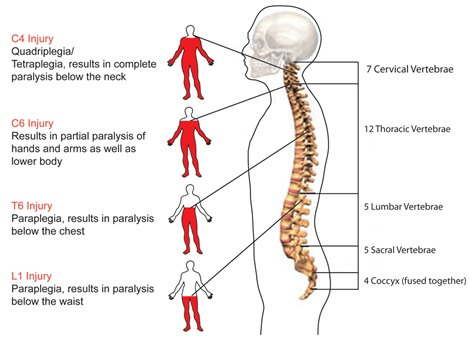What is Paralysis


Paralysis is a life-changing condition that involves much more than the inability to walk. It also involves less obvious functions that are lost due to the disruption of communication between the brain and the nervous system:
- Loss of muscle function
- Loss of touch sensation
- Loss of autonomic functions:
-
- bowel/bladder and sexual function
- blood pressure regulation.
- temperature regulation
- inability to sweat.
- Loss of health: infection; UTI’s; stroke; and more
- Dramatic changes to life can result in mental health issues and depression.

MAKING THE IMPOSSIBLE POSSIBLE
The medical community used to believe paralysis was permanent.
Not anymore.
Now they BEL13VE.
SPINAL STIMULATION TREATMENT IS MAKING THE IMPOSSIBLE POSSIBLE
According to Dr. Roderic Pettigrew, Director National Institute of Biomedical Imaging & Bioengineering (NIBIB), National Institutes of Health
April 4, 2014 – FOX News: “A spinal cord injury may no longer mean a lifelong sentence of complete paralysis.”

SPINAL STIMULATION
Two methods of spinal stimulation treatment deliver electrical impulses to the spinal nerve to amplify weakened nerve pathways that control movement and other autonomic functions below the point of injury to the spinal column:
- Epidural Electrical Stimulation (EES) – an electrode is implanted into the epidural space that is by the backside of the bones of the vertebral spine, meaning that the electrode array is inserted in the gap space on top of the dura (thick membrane) just outside of the spinal cord.
- Transcutaneous – a non-invasive transmission of electrical stimulation that is above the skin called functional electrical stimulation (FES) that aims voltage to the muscles below it.
Our Spinal Stimulation Clinical Trials are Changing Lives
We just completed the world’s largest clinical trial for spinal stimulation treatment using the SpineX SCONE device to restore hand and arm function for 24 people living with quadriplegia. This treatment works. ALL 24 participants in the study responded to the therapy.
The next step to gain FDA approval of the SCONE device has already started. It’s a pivotal trial for 90+ participants living with chronic complete paralysis who will receive spinal stimulation treatment using the SCONE device to target bladder and bowel function recovery.
It’s the last trial required before the FDA will approve any new medical treatment for use in the clinic. If it passes, then spinal stimulation treatment using the SCONE device will become the FIRST paralysis recovery treatment ever approved by the FDA.
That means we can get the SCONE therapy to those who are waiting.
